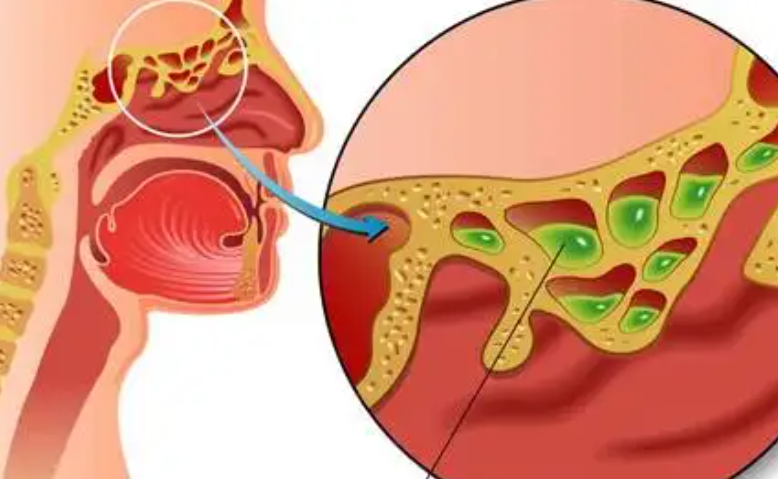
In recent weeks repeated nosebleeds, this in the end is got what strange disease? Don't be nervous, the high incidence of nasal bleeding is coming, and some hospitals receive more than 30 patients in the ear, nose and throat department a day. Although nosebleeds are very common, when the "splash" nosebleeds gushed out, it is inevitable to make people nervous, coupled with improper disposal is worse.There are two places in the nose, high bleeding areas
Recently, nasal bleeding is very common, trauma, sleeping, eating, washing may occur, unilateral and bilateral can occur. Mild patients only appear bloodshot, a few drops of blood, severe hemorrhagic shock.This is a very common otolaryngology clinical disease, do not panic after encounter, according to different circumstances we can do the corresponding treatment.
First let's find out where the bleeding is. There are two areas with high incidence of bleeding: the most common is the easy bleeding area, also known as the Little area, which is located in the anterior and lower nasal septum, and the blood vessels are very concentrated, mostly in children and adolescents, and is mostly related to repeated picking and rubbing the nose, trauma, diet and other factors.
The second is the posterior nostril naso-nasopharyngeal venous plexus, which is more common in middle-aged and elderly people, mostly due to systemic factors such as hypertension and diabetes, vascular sclerosis and small blood vessel dilation.
Old people and children。The causes of epistaxis can be divided into local and systemic causes.Local etiology Nasal diseases, nasal and cranial trauma and nosogenic injuries.
Common nasal diseases such as acute and chronic rhinitis, allergic rhinitis, sinusitis, patients often appear repeated rubbing of the nasal cavity, resulting in mucosal ulcers in the nose area prone to bleeding.
Due to the prolonged rhinitis does not heal, the ulcer mucosa in this area can not return to a normal state, which is also the main cause of many patients with epistaxis.
In addition, deviation of the nasal septum is also a common anatomical factor, and the mucosa of the nasal septum will be thinner in patients, and the mucosa is more likely to be dry and ulcerated.
There are also tumors such as nasal and nasopharyngeal tumors, such as nasal hemangioma, sinus inverted papilloma, hemorrhagic necrotic polyps, malignant tumors, etc., all of which have symptoms of nasal bleeding.
Here is a special response to the concerns of many parents - the causes of children's nose bleeding this year. At present, the incidence of seasonal allergic rhinitis and sinusitis in children is high, and the patients have different degrees of irritant actions such as picking and rubbing nasal cavity, blowing nose, nasal irrigation, etc. The recent temperature rise is very fast, resulting in many children have a large intake of snacks, sweets, cold food, these are high-calorie food, excessive calories will lead to "fire"; At this stage of this year, North China is relatively dry, more likely to cause nasal dryness, nasal itching.
Systemic etiology
The first is high blood pressure, a common cause of middle-aged and elderly people, leading to hardening of small blood vessels and even cerebrovascular diseases.Followed by coagulation dysfunction, blood diseases and other blood causes, often manifested as nose bleeding, oral bleeding, oral ulcers and so on.
Stuffing your nose is not advisable。The bleeding needs to be pinched in the right place
In the occurrence of nosebleed can not panic, to eliminate tension, tension will lead to increased blood pressure, prohibit random swallowing of clots, prohibit random stuffing.
Some hemostatic treatment can be done as appropriate, and in many cases it can be done by itself.
The correct practice of self-hemostasis occurs in the bleeding prone area, pressing the bilateral nasal wings to the anterior lower nasal septum of the bleeding point, 5 to 10 minutes, to observe whether the bleeding stops. At the same time, ice is applied to the forehead and back of the neck to stimulate vasoconstriction and reduce bleeding. If there are nasal drops at home that constrict blood vessels, they can be used in appropriate amounts to constrict blood vessels and reduce the amount of blood loss.
If bleeding symptoms occur repeatedly or the amount of bleeding is relatively large, it is recommended to go to the hospital as soon as possible, especially in middle-aged and elderly patients with hypertension, blood history or malnutrition.
The way specialists treat
Repeated bleeding, visible small blood vessel in the front nostril, physical or chemical cauterization such as 50% silver nitrate, trichloroacetic acid may be attempted.
For relatively severe bleeding, when simple hemostasis is ineffective, anterior nostril bleeding can be filled. Posterior nostril bleeding, choose posterior nostril tamponade. When the bleeding point cannot be determined, nasal tamponade can be used first, and 2 to 3 days later, nasal endoscopy can be tried to find the bleeding point, and accurate hemostatic treatment can be performed. If the above methods can not stop severe bleeding, it is necessary to locate the blood vessels, perform vascular ligation and vascular embolization.
Spring and summer season to deal with nose bleeding, just need to do the following simple points.
- Actively control nasal diseases such as rhinitis, and prevent improper actions such as picking and rubbing nasal passages.
-
Keep the nasal cavity moist, such as nasal physiological sea water, sesame oil, etc.
-
Diet control, reduce intake of high-calorie, irritating foods, such as sweet, spicy, fried and other foods, to avoid "getting angry".
-
For the bleeding area, some drugs that help repair the mucosa can be used.

